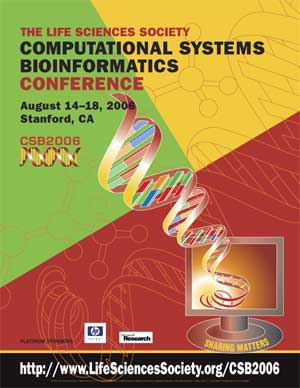PEM: A GENERAL STATISTICAL APPROACH FOR IDENTIFYING DIFFERENTIALLY EXPRESSED GENES IN TIME-COURSE CDNA MICROARRAY EXPERIMENT WITHOUT REPLICATE
Xu Han*, Wing-Kin Sung, Lin Feng
Genome Institute of Singapore, 60, Biopolis Street, Singapore 138672, Singapore. hanxu@gis.a-star.edu.sg
Comput Syst Bioinformatics Conf. August, 2006. Vol. 5, p. 123-132. Full-Text PDF
*To whom correspondence should be addressed.

Replication of time series in microarray experiments is costly. To analyze time series data with no replicate, many model-specific approaches have been proposed. However, they fail to identify the genes whose expression patterns do not fit the pre-defined models. Besides, modeling the temporal expression patterns is difficult when the dynamics of gene expression in the experiment is poorly understood. We propose a method called PEM (Partial Energy ratio for Microarray) for the analysis of time course cDNA microarray data. In the PEM method, we assume the gene expressions vary smoothly in the temporal domain. This assumption is comparatively weak and hence the method is general enough to identify genes expressed in unexpected patterns. To identify the differentially expressed genes, a new statistic is developed by comparing the energies of two convoluted profiles. We further improve the statistic for microarray analysis by introducing the concept of partial energy. The PEM statistic is incorporated into the permutation based SAM framework for significance analysis. We evaluated the PEM method with an artificial dataset and two published time course cDNA microarray datasets on yeast. The experimental results show the robustness and the generality of the PEM method. It outperforms the previous versions of SAM and the spline based EDGE approaches in identifying genes of interest, which are differentially expressed in various manner.
[CSB2006 Conference Home Page]....[CSB2006 Online Proceedings]....[Life Sciences Society Home Page]